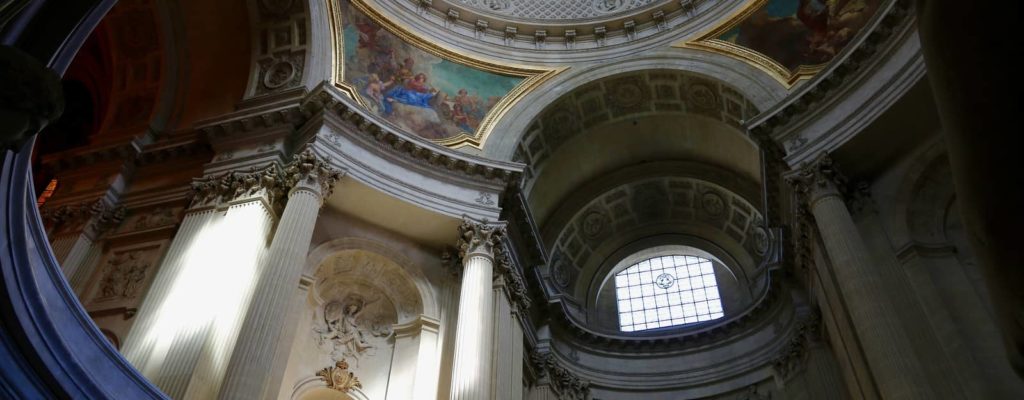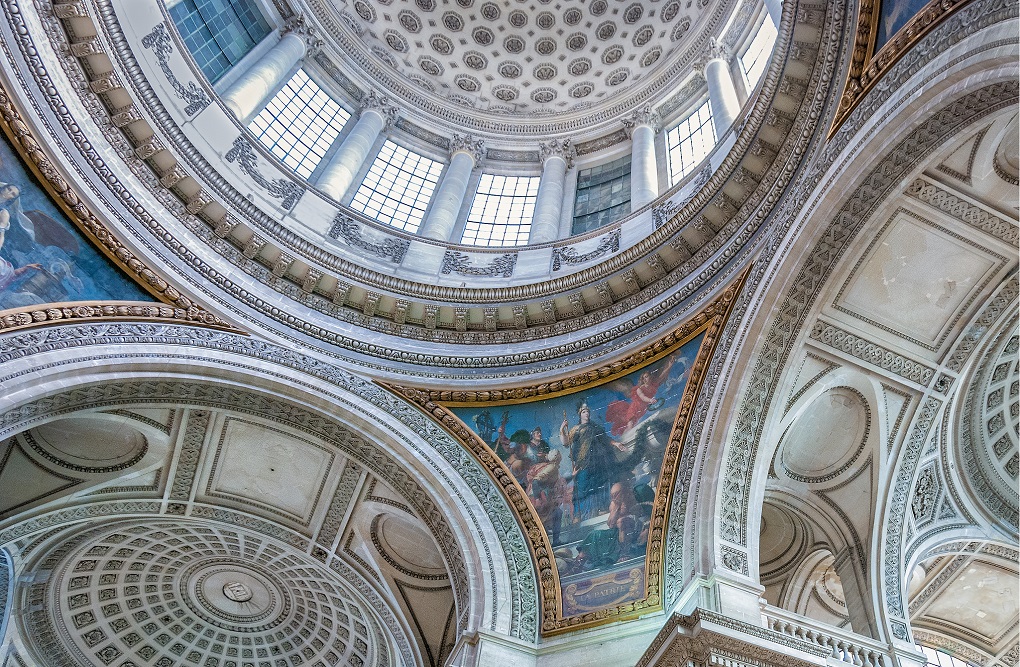Pantheon

The fascinating history of the Pantheon Paris ensures the monuments appeal endures. With this in mind, the Pantheon ranks as a top tourist and visitor attraction because of its history.
Visitors and tourists, from the world over, come to Paris specifically to visit the Pantheon. Above all, visiting the Pantheon correctly means knowing how to visit it. Therefore, with this site, its services, and guides, we hope to make your trip to Paris and the Paris Pantheon fully enjoyable and unforgettable.
We answer your Pantheon Paris questions:
- How to buy tickets? And what are the prices, entry fees, and discounts? Where to purchase tickets online? Find out if you qualify for free tickets? Everything you need to know about buying Pantheon Paris tickets.
- What are the opening hours? When is the Pantheon Paris closed? Best time to visit the Pantheon? What is the latest time each day before the doors close? When does the Pantheon Crypt close? We will tell you the most complete visiting schedule for the Pantheon Paris opening hours.
- Read our blog and visit our pages to discover facts. Who is buried in the Pantheon Paris? What about Pantheon Paris burials? Learn about the architectural style. Start here to discover Pantheon Paris interesting facts.
You will discover the Pantheon in a whole new light. Read on to get an overview of this website and of course the monument itself.
The Pantheon was the first major Parisian tourist attraction. The Arc de Triomphe Paris, the Grand Palais Paris, the Louvre Paris and the Eiffel Tower were all built after the Pantheon (built between 1764 and 1790). The Notre Dame Cathedral Paris was, however, already built.
Even though Paris has hundreds of monuments, thousands of restaurants and many more thousands of areas of interest. The Pantheon is in the top five Parisian monuments visitors visit.
Top Destination in Paris
One reason why it is a top five stop in Paris is due to the panoramic view of Paris. The Pantheon dome view of Paris is without a match. You can see all of the top monuments from here. (Incidentally, and don’t worry, it’s not a straight vertical climb.)
There are approximately 276 steps in the climb to the top of the Pantheon (called, “les colonnades”). It’s a fairly easy walk which combines both flat and sloping surfaces. Because it’s broken into sections, it’s not particularly exhausting even for an older person and again, it’s worth it. You get to see the absolute best panoramic view of all of Paris!
The Pantheon Paris: Summary Facts
A Church and a Crypt
The Pantheon Paris (Latin Pantheon, from Greek Pantheon, meaning “Every God”) is one of the popular Paris tourist attractions. It is a building found in the Latin Quarter of Paris, France. The Pantheon was originally built as a church and was dedicated to St. Genevieve. After many renovations and updates, it is now a place where people can go to worship. Now it is also known for the Crypt and as a burial ground.
Architecture
Architecturally, the building is an early example of Neoclassicism. The facade models after the Pantheon in Rome (its namesake). The dome surmounts the monument. It owes some of its characteristics to Bramante’s “Tempietto” (Donte Bramante built the small commemorative martyrium (tomb) in the courtyard of the San Pietro in Montorio).
Jacques-Germain Soufflot
Located in the 5th arrondissement on the Montagne Sainte-Geneviève, the Pantheon has a view which looks out over all of Paris. Additionally, the Pantheon’s architect, Jacques-Germain Soufflot, had the intention of combining the lightness and brightness of the Gothic cathedral with classical principles.
Sadly, Soufflot died before his work was achieved, and his plans were not completely followed. The transparency he had planned for his masterpiece was not attained. Nevertheless, it is one of the most important architectural achievements of its time and the first great neoclassical monument.
As with most famous buildings, the Pantheon Paris has its unique story. King Louis XV ordered the construction of the Pantheon to show gratitude to God for his improved health. The Pantheon replaced the then damaged Saint-Genevieve Church.
Mr. Soufflot wanted to have the Gothic style combined with the classical structure. As a result, there is little doubt that this building is one of the greatest neoclassical monuments in the world.
The French Revolution
The French Revolution came shortly after the construction of the Pantheon.
The Revolutionist government made the Pantheon into a Mausoleum from the status of a Church. A mausoleum is a place to bury exceptional French men and women. They often sacrificed their lives for their country. Some are men and women who contributed to mankind or France in a recognizable manner.
The Pantheon flipped back and forth to a church over the years. In the end, it eventually assumed its lasting role as a burial place for martyrs and brilliant French citizens.
Again, we can’t really stress enough to Paris tourists or visitors, the sights this building offers are quite fantastic, as such, you can literally see almost the entirety of Paris.
The inside architecture is visually amazing: it has the Gothic decorations combined with the mainly classical style of the building, thus creating the much-admired neoclassical monument.
The Pantheon is a must-see when you visit Paris, both because of the imposing architecture, and finally, with respect to the people that made France and the world a better place.
Foucault’s Pendulum
One additional fact about the Paris Pantheon it’s where astronomer Jean Bernard Léon Foucault held his famous experiment in 1851 that proved that the world spins on an axis, as opposed to staying still.
Napoleon Bonaparte learned of Foucault’s works and therefore insisted Foucault carry out the pendulum experiments in a prestigious place. Consequently, the experiments occurred at the Pantheon of Paris. The experiments took place on March 31, 1851. On the subject of the sphere, it was 28kg and the wire was 67m (219,8 feet) long.
Furthermore, and later in 1851, the “Foucault Pendulum” moved to the Musée des Arts et Métiers.
The Pantheon Paris Crypt
The Pantheon Crypt is in a subterranean chamber. Therein is the final resting place for many well known (and some historically famous) French and foreign writers, poets, politicians, and scientists.
Most noteworthy, and by way of example, these individuals are entombed at the Pantheon:
- Voltaire
- Rousseau
- Victor Hugo
- Marat
- Emile Zola
- Jean Moulin
- Soufflot
- Louis Braille
- Marie Curie
In conclusion, as you enjoy yourself wandering the beautiful city of Paris, don’t forget to include the Pantheon right up there in your list of stops. As such, it’s unlikely you will enjoy many more photos of Paris than the ones you capture at the top of the Pantheon!
